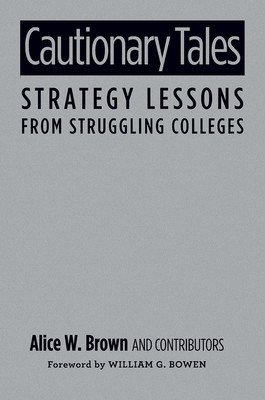
- We will send in 10–14 business days.
- Author: Alice W Brown
- Publisher: Stylus Publishing (VA)
- ISBN-10: 1579227791
- ISBN-13: 9781579227791
- Format: 15.2 x 23.1 x 2.3 cm, hardcover
- Language: English
- SAVE -10% with code: EXTRA
Reviews
Description
Through a unique case study approach to examining and analyzing colleges that have struggled, Alice Brown reveals the steps that can lead to a sustainable operation and, when closure is inevitable, the steps to do so with orderliness and dignity.
Rather than expounding on management theory and prescriptions, she focuses on narrative examples of survival and closure, recounted by real people in actual colleges, and reports the lessons they learned. Here are examples of strategies involving mergers, partnerships, or "going it alone", and their outcomes, that illustrate principles that can serve as guides for fragile colleges struggling to address their social and economic challenges. This book also offers guidance by seasoned scholars and administrators on issues as varied as leadership, the roles of the president, governing boards, faculty and staff, in articulating and implementing mission and strategies for survival. While this book is of immediate practical value for trustees and leaders of small colleges as they look toward and plan for the future, for anyone aspiring to an administrative positions in higher education the examples constitute a microcosm of the interplay between the external constituencies, governance structures and internal forces that sustain or undermine institutional health, and which are hard to observe clearly in larger, more decentralized environments.-- "The Bookwatch"EXTRA 10 % discount with code: EXTRA
The promotion ends in 18d.02:46:14
The discount code is valid when purchasing from 10 €. Discounts do not stack.
- Author: Alice W Brown
- Publisher: Stylus Publishing (VA)
- ISBN-10: 1579227791
- ISBN-13: 9781579227791
- Format: 15.2 x 23.1 x 2.3 cm, hardcover
- Language: English English
Through a unique case study approach to examining and analyzing colleges that have struggled, Alice Brown reveals the steps that can lead to a sustainable operation and, when closure is inevitable, the steps to do so with orderliness and dignity.
Rather than expounding on management theory and prescriptions, she focuses on narrative examples of survival and closure, recounted by real people in actual colleges, and reports the lessons they learned. Here are examples of strategies involving mergers, partnerships, or "going it alone", and their outcomes, that illustrate principles that can serve as guides for fragile colleges struggling to address their social and economic challenges. This book also offers guidance by seasoned scholars and administrators on issues as varied as leadership, the roles of the president, governing boards, faculty and staff, in articulating and implementing mission and strategies for survival. While this book is of immediate practical value for trustees and leaders of small colleges as they look toward and plan for the future, for anyone aspiring to an administrative positions in higher education the examples constitute a microcosm of the interplay between the external constituencies, governance structures and internal forces that sustain or undermine institutional health, and which are hard to observe clearly in larger, more decentralized environments.-- "The Bookwatch"

Reviews